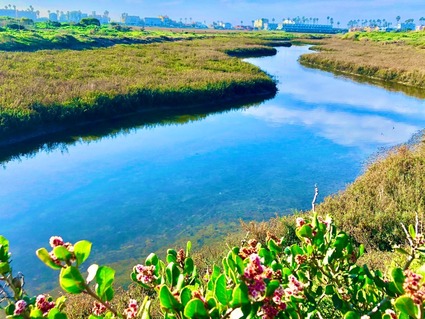WATER QUALITY IMPROVEMENTS

National Water Quality Month – Pesticide and Fertilizer Pollution Prevention Tips
August is National Water Quality Month – a month dedicated to raising awareness on the importance of water quality and its impact on human and aquatic life. A huge threat to water quality is pollution stemming from sources like trash, cigarette butts, plastic bottles, and yard waste, as well as large items such as mattresses, household appliances, and other abandoned waste. However, there are also pollutants you can’t see that are harmful to the health of our watershed such as pesticides and fertilizers. As water moves downstream through our watershed, and into our creeks, streams, reservoirs, and ocean via the storm drain system, it picks up all forms of pollutants – even the invisible ones – impacting our water quality and recreational enjoyment and causing harm to residents and wildlife.
|
Pesticides and Fertilizers – The Invisible Pollutants
Pesticides and fertilizers are toxic to both aquatic and human life if they reach our local streams, rivers, beaches, and groundwater. These chemicals are designed to kill pests such as weeds (herbicides), insects (insecticides), rodents (rodenticides), and fungi (fungicides). If these chemicals find their way to our surface waters, they can harm aquatic life. Fertilizers contain nutrients, like nitrogen and phosphorus, that are beneficial to plants. However, excess nutrients can lead to nutrient pollution and feed algae which grows rapidly on the surface, blocking out sunlight for aquatic plants and decreasing oxygen levels for fish. Nutrient pollution can also cause harmful algal blooms, which produce toxic chemicals that make animals and people sick.
Small Actions Can Have a Big Impact on Water Quality
You can play a role in protecting our water resources by following these tips to prevent pesticide and fertilizer pollution.
-
Use less toxic alternatives as your first choice in tackling pests. In addition to harming people and wildlife, some products can actually worsen pest problems. Use mulch instead of herbicides to prevent weeds and help absorb water. Always check product labels to be sure the pesticide is registered for your plant and pest situation.
-
Limit use of fertilizers (more is not better). Actively growing turf, flowering shrubs, and fruit trees require regular feeding, but ornamental trees do not. Use the least amount of product and consider slow-release or composted organic fertilizers which are less likely to seep into storm drains and enter local waterways.
-
Properly apply and clean up chemicals. Follow all label requirements to avoid improper use and application. Only apply chemicals when it is not windy and more than 48 hours from a rainstorm. Prevent chemicals from getting onto hard surfaces like sidewalks, driveways, and patios, and remember to sweep up spills immediately. Store all landscape chemicals in a contained, covered area.
-
Practice Integrated Pest Management (IPM) principles in treating pests. IPM is a process focused on long-term prevention of pests that minimizes risks to people and the environment. Learn more about the University of California Agriculture & Natural Resources IPM Program here.
Join us in making National Water Quality Month a year-long celebration! Visit the County’s Watershed Protection Program website to see what you can do throughout the year to protect our local water sources.

|